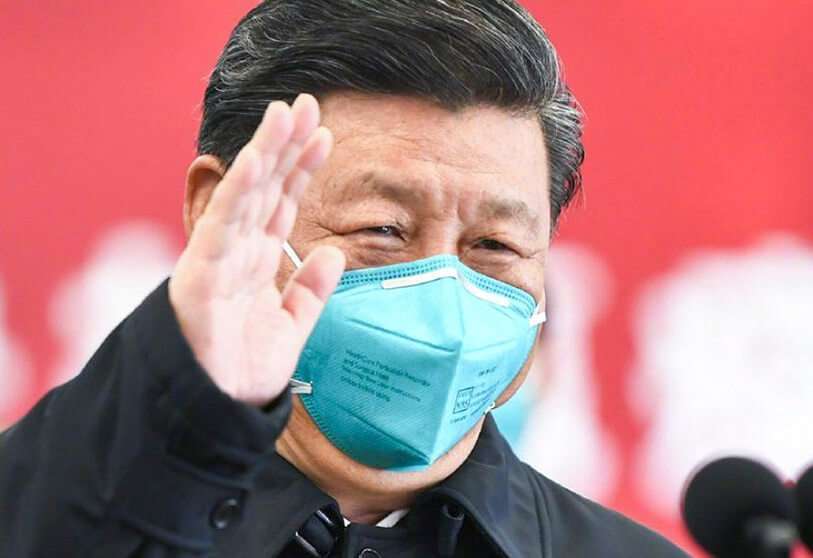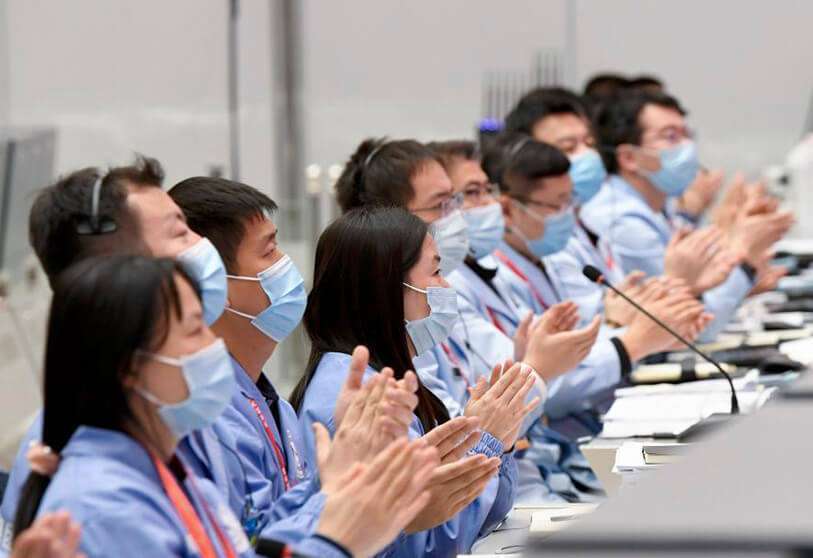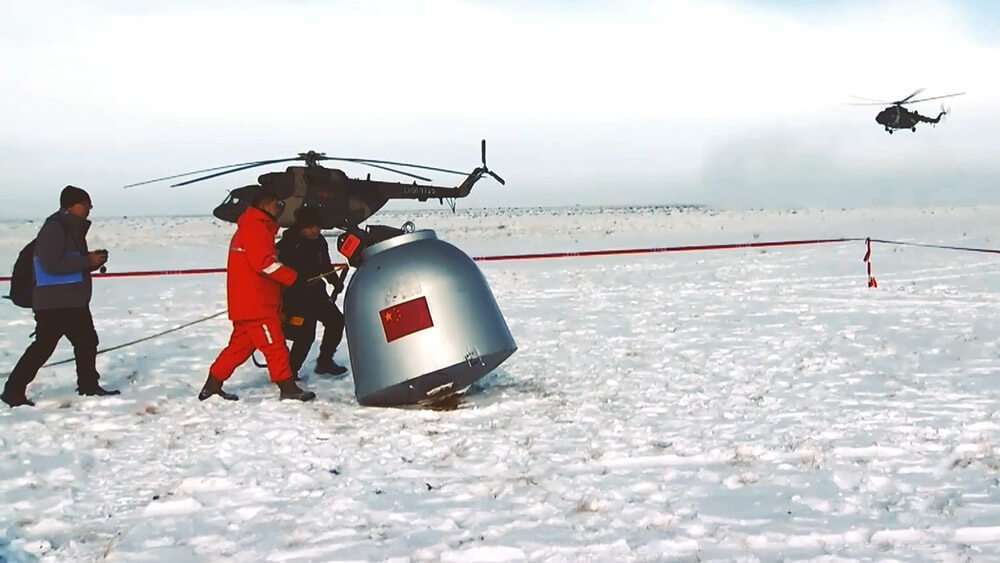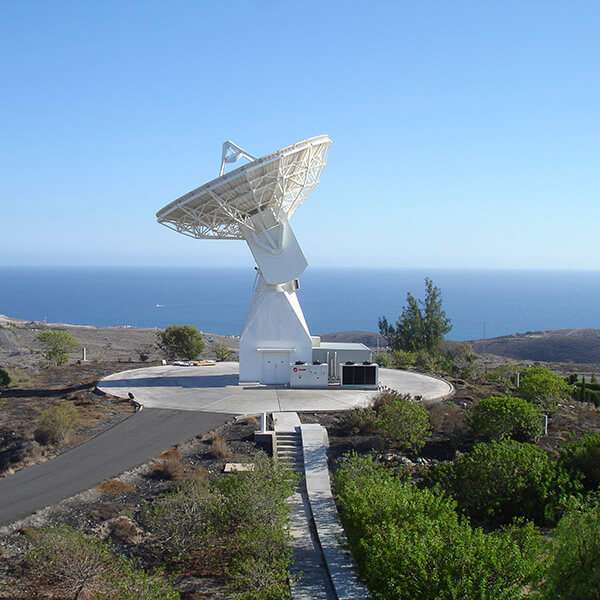China endorses status as major space power after successful trip to the Moon and back

The nearly 1.4 billion Chinese can be proud that their country has become the third nation that can boast of having landed on the surface of the Moon and brought back material from its surface and its core.
President Xi Jinping deserves credit for having authorised a very complex space mission full of challenges, each more risky than the next, but which the wisdom and technology of Chinese engineers and scientists have managed to overcome one after another until it became a complete achievement.
The return capsule of the Chang'e-5 one-way mission, collecting samples and returning to the moon, landed on December 17 at 1:59 am in Beijing - 6:59 pm the previous day during Spanish mainland time - on the steppes of Siziwang, an almost unpopulated area of the autonomous region of Inner Mongolia in the north of the country. It had taken off on November 23 and remained over the moon for only 19 hours. Its mission lasted 23 days.

The final module of Chang'e-5 has returned with grains, dust and substrates, the exact quantity of which has yet to be confirmed. The official data is that there is one and a half kilo of material from the surface and half a kilo of components from its subsoil collected from a depth of up to two metres. But it has also brought a secret jealously guarded.
Next to the soil extracted from our natural satellite a collection of rice seeds, orchids, alfalfa and oats has arrived and has travelled to Selene inside Chang'e-5. The experiment aims to find out how cosmic radiation and micro gravity affect their development, yield and quality, once they have been planted on Earth with the aim of obtaining crops suitable for animal fodder.

Its descent trajectory and re-entry into the Earth's atmosphere was monitored by the Chinese control stations and the tracking ship Yuanwang 3. But the final coverage was provided by the 15-metre diameter satellite dish of the National Institute for Aerospace Technology (INTA), installed by the European Space Agency (ESA) at the Maspalomas station of the Canary Islands Space Centre, which is run by Air Force Colonel Rafael Sahagún.
After making a double entry into the atmosphere to slow down its acceleration, the capsule deployed its 50-square-metre parachute at 10 kilometres altitude to land as gently as possible on the Mongolian snow. Radars and telescopes observed the descent, which facilitated the arrival of the aero-terrestrial search and rescue device consisting of a squadron of six twin-turbine Mil Mi-171 helicopters with infrared lights and powerful spotlights as well as a large number of all-terrain vehicles.
The space part of the Chang'e-5 mission has just been completed, but the scientific side is still underway. Lunar samples will end at the National Astronomical Observatory of the Chinese Academy of Sciences in Beijing. A laboratory has been built and equipped there, totally isolated from the outside to prevent air, water or any other terrestrial substance from contaminating the lunar material. Once each lunar soil extraction has been classified and stored, Chinese chemists, physicists and geologists will proceed to analyse and study all the material, especially its mineralogical composition and properties.

It is clear that Chang'e-5 has been an ambitious scientific exploration mission that aims to deepen the study of the lunar surface and identify those minerals abounding in the region. For example, it is expected to confirm that the samples date back 1,500 years, which would mean that the youngest soil from the star has been collected, which could give a new vision of the moon and its evolution. But above all, the success of Chang'e-5 is the confirmation of China's high spatial and technological potential.
From the point of view of Jorge Potti, Director General of Space of the Spanish multinational GMV and Vice-President of the Spanish Association of Defence, Security, Aeronautics and Space Technology Companies (TEDAE), the success of Chang'e-5 is "the demonstration that China is fully aware of the strategic importance of space". His broad knowledge of the sector at both national and international level prompts him to state that Beijing's authorities have taken "the exploration of the cosmos and everything related to earth observation, communications and satellite navigation very seriously".

From the perspective of one of the main managers of the national space industry, the success of Chang'e-5 "should be an incentive for the West, and especially European countries, to strengthen investment in space, both in the short, medium and long term". And he recalls that "space-based applications are directly beneficial to citizens".
It is true that the United States managed to remove pieces of the moon between 1969 and 1972 with the Apollo manned flight programme. The Soviet Union also managed to do so in the second half of the 1970s with its automatic spacecraft called Luna. However, it should be borne in mind that China was starting from a much more backward situation in all respects and that it was not until Deng Xiaoping took power that it entered a period of unstoppable economic development in the second half of the 1980s. Step by step, Beijing has managed to rise above Russia and Europe in many aspects of the space sector.

The current mission will be followed by Chang'e-7, 6 and 8. With a design similar to the one that has now begun the flight, the first two are scheduled to take off in 2023 and 2024, respectively. Both will descend in the vicinity of the lunar South Pole, capture soil samples, study the surrounding orography and return with them back to Earth. Chang'e-8 is designed to take off in 2028 and test new technologies that could make it possible to build a scientific base with 3D printer technology by mid-2030. Because it must not be forgotten that China has its eyes set on placing Chinese astronauts on the Moon.

We have to go back half a century to find the first humans who removed dust and rocks from our natural satellite. That honour belongs to the pioneers who set foot on the Moon with NASA's Apollo 11 mission - Neil Armstrong and Buzz Aldrin - who collected 22 kilos and brought them to Earth on 24 July 1969. The last ones were Gene Cernan and Jack Schmidt from the Apollo 17 mission.

In total, by the time the Apollo programme ended in December 1972, the American astronauts had managed to collect a total of 382 kilos. To this figure must be added the contributions made by the Soviets. The Luna 16 probe transported back about 100 grams in 1970. It was followed by Luna 20, which captured less than 50 grams in 1972, and Luna 24, which in 1976 was able to collect 170 grams.











